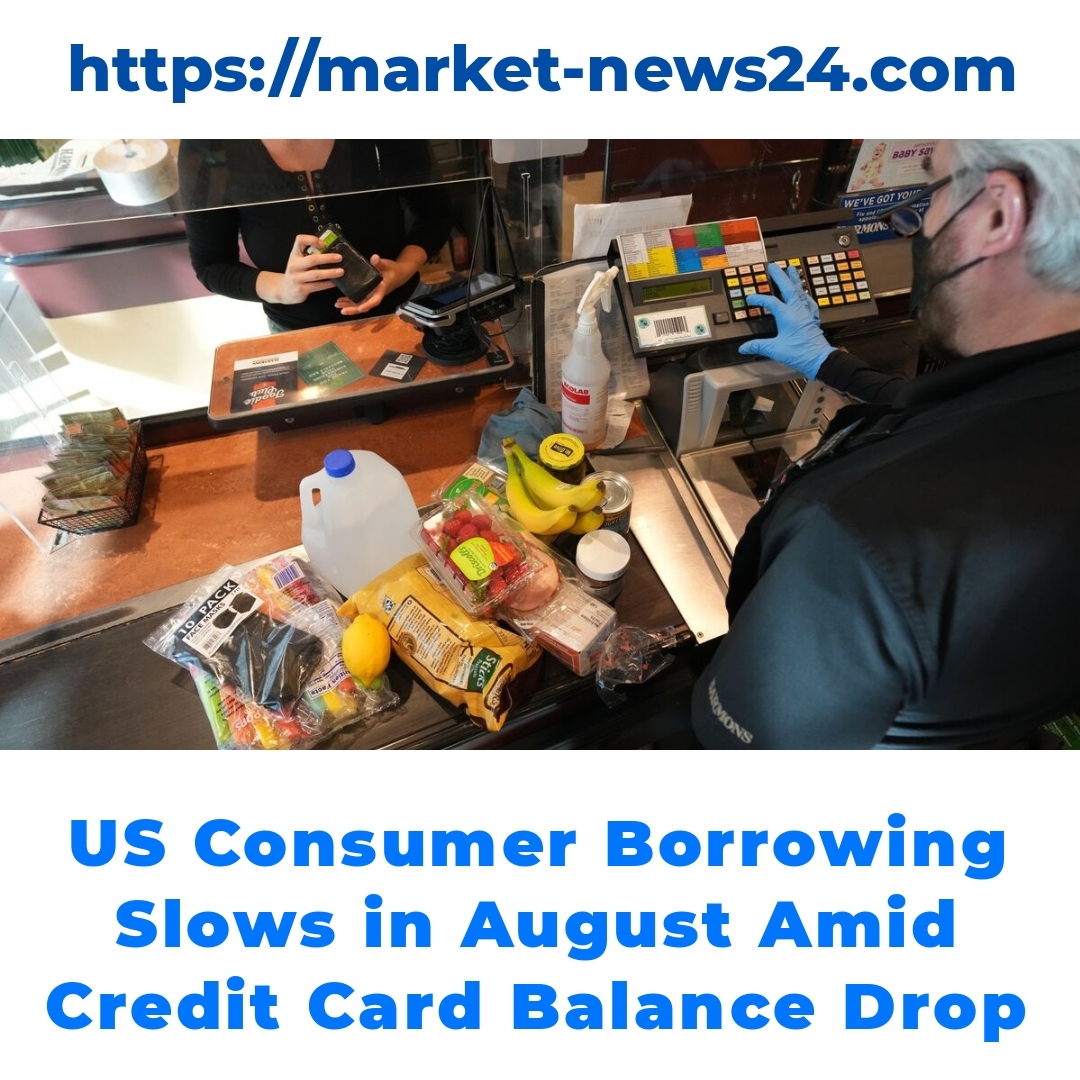The landscape of consumer borrowing in the US is evolving, with notable shifts observed in August. This article delves into the latest trends in consumer borrowing, highlighting key statistics and changes in borrowing habits, especially regarding credit-card balances. Understanding these developments is crucial for navigating today’s credit environment.

Overview of Consumer Borrowing in August
In August, consumer borrowing in the US showed some interesting trends. There was a noticeable shift, with growth in borrowing slowing down compared to earlier months. This slower pace has raised some eyebrows among economists and financial experts. Many are paying close attention to overall borrowing trends as they analyze how they might signal changes in the economy. While borrowing typically spikes during summer months, August’s statistics reveal a more cautious approach by consumers.
As we dive deeper into the world of consumer borrowing, it becomes clear that the landscape is affected by various factors including spending habits and borrowing rates. The primary keyword here is “consumer borrowing,” which serves as a cornerstone for understanding these shifts. Alongside this, other relevant terms such as “US consumer debt” and “borrowing rates” help paint a broader picture of the current financial environment.
The Impact of Credit-Card Balances on Consumer Borrowing
One major highlight in August was the significant decline in credit-card balances, marking the largest drop since March 2021. This decline in credit-card balances is more than just a number; it has real implications for consumer borrowing and spending. When people pay down their credit cards, it indicates a shift in consumer behavior. Many may be taking a step back from accumulating debt, opting instead for more prudent financial decisions.
This decline has also provided interesting insights related to consumer spending. With lower credit-card balances, consumers may find themselves in a better position financially, leading to more controlled spending habits. When consumers borrow less through credit cards, it can affect their overall borrowing behavior, prompting them to rely more on personal loans or other types of credit. To put it into perspective, research indicates that as credit-card balances decrease, consumers tend to show improved credit usage, a factor influencing “borrowing rates” in the credit market.
Exploring August Borrowing Trends
So, what led to the increased consumer borrowing in August? For starters, many factors contributed to this uptick. The steady rise of personal loans has been particularly noteworthy. It seems that borrowers are turning to personal loans as a means of managing finances more effectively, especially when credit cards seem less favorable.
There are various reasons behind the increased consumer borrowing in August. For one, unexpected expenses may prompt borrowers to seek alternatives to credit cards. Additionally, trends in consumer credit card usage in the US indicate that individuals are becoming more strategic about leveraging credit. It’s not just about borrowing more; it’s about borrowing smartly to cater to immediate needs and long-term financial goals.
Market Influences Affecting Consumer Borrowing Rates
The state of consumer borrowing doesn’t exist in a vacuum; various market influences play a crucial role in shaping borrowing rates. Economic conditions such as inflation, employment rates, and interest policies can all impact how much consumers are willing to borrow. Higher borrowing rates generally deter consumers from taking on new debt, while lower rates can entice them to borrow more.
When discussing “borrowing rates,” it’s essential to note how these rates have fluctuated in response to changing economic environments. For instance, as interest rates rise, consumers might reconsider their borrowing strategies, leading to changes in credit usage overall. This interplay not only affects personal finances but also larger credit market trends that influence how energy and resources flow through the economy.
Case Studies and Examples
Let’s take a look at some real-life examples to illustrate how different demographics are experiencing changes in borrowing trends. For instance, younger consumers, often saddled with student loans and credit-card debt, are increasingly showing a willingness to pay down balances, reflecting the overall decline in credit-card balances.
In contrast, older generations may approach borrowing differently, perhaps feeling more comfortable taking on personal loans for larger purchases rather than relying solely on credit cards. This variance demonstrates how the impact of the credit-card balance drop on borrowing can differ across age groups and their spending behaviors.
Conclusion
In summary, understanding consumer borrowing in August reveals significant trends that could shape the future of credit. With the notable decline in credit-card balances, consumers appear to be adapting their borrowing habits. The importance of these trends cannot be overstated, as they signal changing attitudes toward debt and spending in a rapidly evolving financial landscape. It’s vital to keep an eye on these trends in consumer borrowing, especially as we navigate the complexities of personal finance and economic conditions moving forward.
What trends were observed in consumer borrowing in August?
In August, consumer borrowing showed a slowdown in growth compared to earlier months, indicating a more cautious approach by consumers.
Why did credit-card balances decline in August?
The significant decline in credit-card balances marked the largest drop since March 2021, suggesting that many consumers are opting to pay down existing debt and are making more prudent financial decisions.
How does the decline in credit-card balances affect borrowing behavior?
- Lower credit-card balances may lead to improved financial positions for consumers.
- Consumers might rely more on personal loans or alternative credit sources.
- As credit-card debt decreases, borrowers tend to show improved credit usage.
What factors contributed to increased borrowing in August?
Several factors led to increased borrowing in August, including unexpected expenses and a trend among consumers to be more strategic about credit card usage.
How do market influences affect consumer borrowing rates?
The economic environment, including inflation, employment rates, and interest policies, can significantly impact borrowing rates:
- Higher borrowing rates typically discourage new debt.
- Lower rates can encourage consumers to borrow more.
- Interest rate fluctuations affect overall credit market trends.
Are borrowing habits different among various age groups?
Yes, younger consumers are increasingly paying down debt, while older generations may feel more comfortable taking on personal loans for larger purchases instead of relying solely on credit cards.






